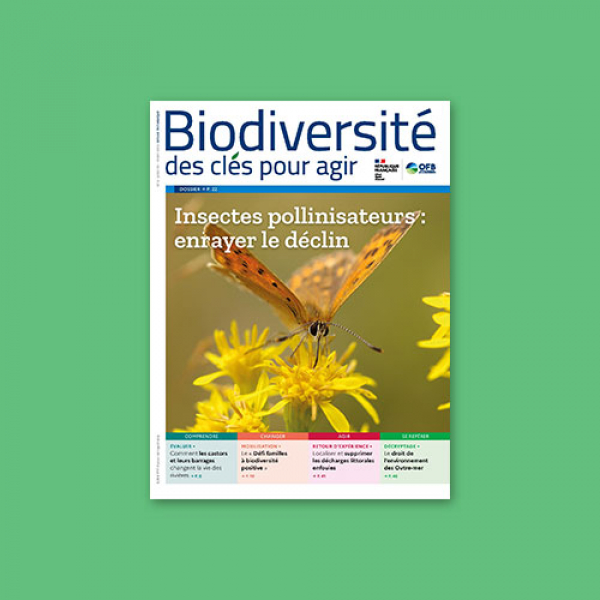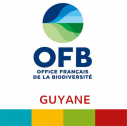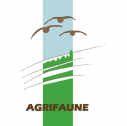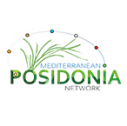Biodiversité, des clés pour agir n°4
Le quatrième numéro de « Biodiversité, des clés pour agir », la revue technique de l’Office français de la biodiversité, est désormais disponible.
Au sommaire de cette édition :
- Comprendre : RES’SOL : restaurer les écosystèmes avec des semences d'origine locales
- Changer : Entretien avec Marine Calmet, juriste et présidente de l'association Wild legal
- Dossier : Insectes pollinisateurs : enrayer le déclin
- Agir : Comment identifier un potentiel de renaturation sur son territoire ?
- Se repérer : Le droit de l'environnement des Outre-mer
À chaque numéro, plusieurs articles sont mis à la disposition des lecteurs gratuitement. Pour célébrer le premier anniversaire de la revue, trois articles sont disponibles :
Bibliographies
Article « Comment les castors et leurs barrages changent la vie des rivières » (pp. 6-9)
Jones, C.G., Lawton, J.H. & Shachak, M. 1994. Organisms as ecosystem engineers. Oikos 69: 373-386.
Richard, P.B. 1973. Le gîte du castor du Rhône (Castor fiber), description et comportement constructeur. Revue d’Ecologie (La terre et La Vie) 27-1 : 3-32.
Bressan, Y. 2017. La gestion des barrages de castor causant des problèmes de cohabitation avec l’homme. Faune Sauvage n°316 : 37-43.
Rosell, F., Bozsér, O., Collen, P. & Parker, H. 2005.Ecological impact of beaers Castor fiber and Castor canadensis and their ability to modify ecosystems. Mammal Review 35(3): 248-276.
MacDonald, D.W., Tattersall, F.H., Brown, E.D. & Balharry, D. 1995. Reintroducing the European Beaver to Britain: nostalgic meddling or restoring biodiversity? Mammal Review 25(4): 161-200.
Nolet, B.A. 1996. Management of the Beaver (Castor fiber): Towards Restoration of Its Former Distribution and Ecological Function in Europe? Council of Europe, Strasbourg, 25 October 1996. 29 p.
Green, K.C. & Westbrook, C.J. 2009. Changes in riparian area structure, channel hydraulics, and sediment yield following loss of beaver dams. Journal of Ecosystems and Management 10: 68-79.
Westbrook, C.J., Cooper, D.J. & Baker B.W. 2006. Beaver dam and overbank floods influence groundwater-surface water interactions of a rocky mountain riparian area. Water Resources Research 42(6): W06404.
Puttock, A., Graham, H.A., Cunliffe, A.M., Elliott, M. & Brazier, R.E. 2017. Eurasian beaver activity increases water storage, attenuates flow and mitigates diffuse pollution from intensively-managed grasslands. The Science of the Total Environment 576: 430-443.
Puttock, A., Graham, H.A., Ashe, J., Luscombe, D.J. & Brazier, R.E. 2020. Beaver dams attenuate flow: A multi-site study. Hydrological Processes 35(2): e14017.
Pollock, M.M., Beechie, T. J. & Jordan C.E. 2007. Geomorphic changes upstream of beaver dams in Bridge Creek, an incised stream in the interior Columbia River basin, eastern Oregon. Earth Surface Processes and Landforms 32: 1174-1185.
Ciuldiene, D., Vigricas, E., Belova, O., Aleinikovas, M. & Armolaitis, K. 2020. The effects of beaver dams on organic carbon, nutrients and methyl mercury distribution in impounded water bodies. Wildlife Biology 2020(3): 1.
Bledzski, L.A., Bubier, J.L, Moulton, L.A. & Kyker-Snowman, T.D. 2011. Downstream effects of beaver ponds on the water quality of New England first- and second-order streams. Ecohydrology 4(5): 698-707. http://dx.doi.org/10.1002/eco.163
Law, A., McLean, F. & Willby, N.J. 2016. Habitat engineering by beaver benefits aquatic biodiversity and ecosystem processes in agricultural streams. Freshwater Biology 61(4): 486-499.
Rolauffs, P., Hering, D. & Lohse, S. 2001. Composition, invertebrate community and productivity of a beaver dam in comparison to other stream habitat types. Hydrobiologia 459: 201-212.
Little, A.M., Guntenspergen, G.R. & Allen, T.F. 2012. Wetland vegetation dynamics in response to beaver (Castor canadensis) activity at multiple scales. Ecoscience 19(3): 246-257.
Ray, A.M., Rebertus, A.J. & Ray, H.L. 2001. Macrophyte succession in Minnesota beaver ponds. Canadian Journal of Botany 79(4): 487-499.
Wojton, A. & Kukula, K. 2020. Transformation of benthic communities in forest lowland streams colonised by Eurasian beaver Castor fiber (L.). International Review of Hydrobiology 106(2): 131-143.
Snodgrass, J.W. & Meffe, G.K. 1998. Influence of Beavers on Stream Fish Assemblages: Effects of Pond Age and Watershed Position. Ecology 79: 928-942.
Wathen, G., Allgeier, J.E., Bouwes, N., Pollock, M.M., Schnidler, D.E. & Jordan, C.E. 2018. Beaver activity increases habitat complexity and spatial partitioning by steelhead trout. Canadian Journal of Fisheries and Aquatic Sciences 76(1): 1086-1095.
Arismendi, I., Penaluna, B.E. & Jara, C.G. 2020. Introduced beaver improve growth of non‐native trout in Tierra del Fuego, South America. Ecology and Evolution 10(17): 9454-9465.
Collen, P. & Gibson, R.J. 2001. The general ecology of beavers (Castor spp.), as related to their influence on stream ecosystems and riparian habitats, and the subsequent effects on fish - A review. Reviews in Fish Biology and Fisheries 10(4) : 439-461.
Kemp, P.S., Worthington, T.A., Langford, T.E., Tree, A.R. & Gaywood, M.J. 2012. Qualitative and quantitative effects of reintroduced beavers on stream fish. Fish and Fisheries 13: 158-181.
Ecke, F., Levanoni, O., Audet, J. et al. 2017. Meta-analysis of environmental effects of beaver in relation to artificial dams. Environmental Research Letters 12(11): 113002.
Dalbeck, L., Lüscher, B. & Ohlhoff, D. 2007. Beaver ponds as habitat of amphibian communities in a central European highland. Amphibia-Reptilia 28: 493-501.
Stringer, A.P. & Gaywood, M.J. 2016. The impact of beavers Castor spp. On biodiversity and the ecological basis for their reintroduction to Scotland, UK. Mammal Review 46: 270-283.
Janiszewski, P., Hanzal, V. & Misiukiewicz, W. 2014. The Eurasian Beaver (Castor fiber) as a Keystone Species - a Literature Review. Baltic Forestry 20: 277-286.
Pietrasz, K., Chodkiewicz, T., Sikora, D., Slezak, M. & Wozniak, B. 2019. Keystone Role of Eurasian Beaver, Castor fiber, in Creating the Suitable Habitat over the Core Breeding Range for Forest Specialist Species the Three-Toed Woodpecker Picoides tridactylus. Baltic Forestry 25(2-50): 223-227.
Nummi, P., Liao, W., Huet, O., Scarpulla, E. & Sundell, J. 2019. The beaver facilitates species richness and abundance of terrestrial and semi-aquatic mammals. Global Ecology and Conservation 20: e00701.
Ciechanowski, M., Kubic, W., Rynkiewicz, A. & Zwolicki, A. 2011. Reintroduction of beavers Castor fiber may improve habitat quality for vespertilionid bats foraging in small river valleys. European Journal of Wildlife Research 57: 737-747.
Nummi, P. & Kuuluvainen, T. 2013. Forest disturbance by an ecosystem engineer: Beaver in boreal forest landscapes. Boreal Environment Research 18: 13-24.
Bashinskiy, I.V. 2020. Beavers in lakes: a review of their ecosystem impact. Aquatic Ecology 54: 1097-1120.
Gurnell, A.M. 1998. The hydrogeomorphological effects of beaver dam-building activity. Progress in Physical Geography 22(2): 167-189.
Auster, R.E., Barr, S. & Brazier, R. 2021. Alternative perspectives of the angling community on Eurasian beaver (Castor fiber) reintroduction in the River Otter Beaver Trial. Journal of Environmental Planning and Management 64(7): 1252-1270.
Pilliod, D.S., Rohde, A.T., Charnley, S. et al. C. 2018. Survey of Beaver-related Restoration Practices in Rangeland Streams of the Western USA. Environmental Management 61: 58-68.
Fairfax, E. & Whittle, A. 2020. Smokey the Beaver: beaver‐dammed riparian corridors stay green during wildfire throughout the western United States. Ecological Applications 30(8): e02225.
Angst, C. 2014. Revitalisation de cours d’eau : le castor est notre allié. Guide pratique. Connaissance de l’environnement : 1417. Office fédéral de l’environnement, Berne, 16 p.
Brown, A.G., Lespez, L., Sear, D.A. et al. 2018. Natural vs Anthropogenic Streams in Europe: History, Ecology and Implications for Restoration, River-Rewilding and Riverine Ecosystem Services. Earth-Science Reviews 180: 185-205.
Piton, G., Loucougaray, G., Daumergue, N., Breton, V. & Evette, A. 2020. The beaver’s menu: species and spatial selection of a European beaver population and implications for riverbank bioengineering. Wetlands Ecology and Management 28(6): 901-908.
Catalan, N., Herrero Ortega, S., Gröntoft, H. et al. 2016. Effects of beaver impoundments on dissolved organic matter quality and biodegradability in boreal riverine systems. Hydrobiologia 793: 135-148.
Article « Deepfaune : vers un traitement automatisé des images de pièges photographiques » (pp. 16-18)
Rigoudy, N., Benyoub, A., Besnard, A. et al. 2022. The DeepFaune initiative: a collaborative effort towards the automatic identification of the French fauna in camera-trap images. bioRxiv.
Article « La concurrence entre abeilles domestiques et pollinisateurs sauvages » (pp. 29-30)
Iwasaki, J.M., & Hogendoorn, K. 2022. Mounting evidence that managed and introduced bees have negative impacts on wild bees: an updated review. Current research in insect science, Vol.2, 100043.
Article « Localiser et supprimer les décharges littorales enfouies » (pp. 41-43)
Galgani, F., Bruzaud, S., Duflos, G. et al. 2020. Pollution des océans par les plastiques et les microplastiques. Techniques de l'Ingénieur. (Editions T.I.), 2020-01-10, P.BIO9300. 17 p.
Basilico, L., Staub, P.-F. & Dris, R. 2020. La pollution plastique - De nouvelles connaissances et des pistes pour l’action publique. OFB. Collection Rencontres-Synthèse. 112 p.
Contact












